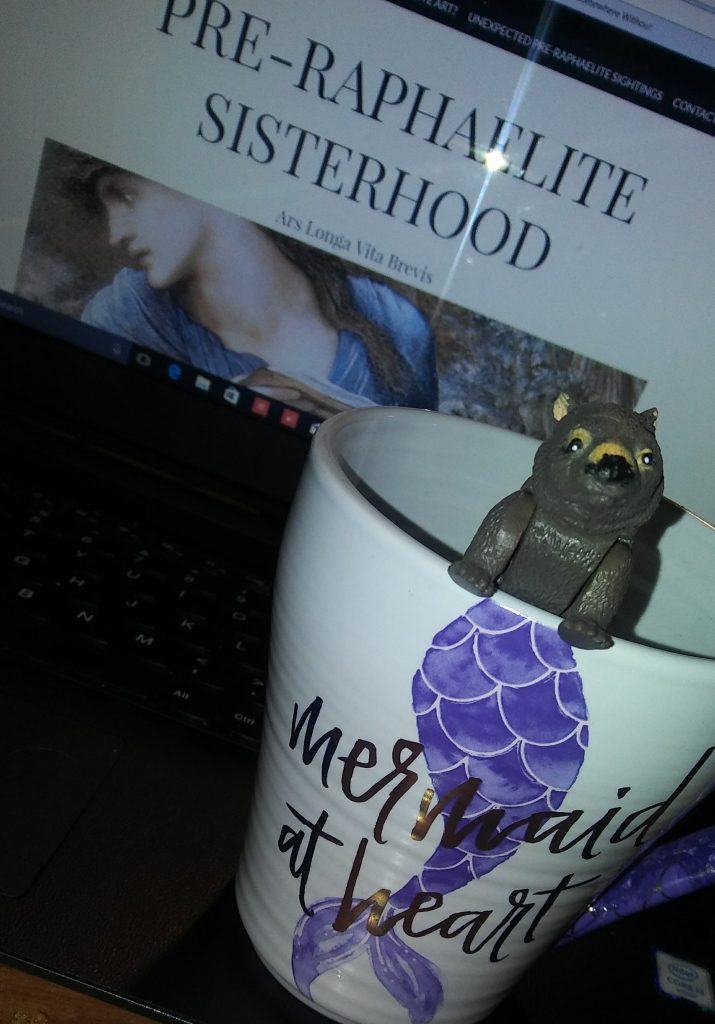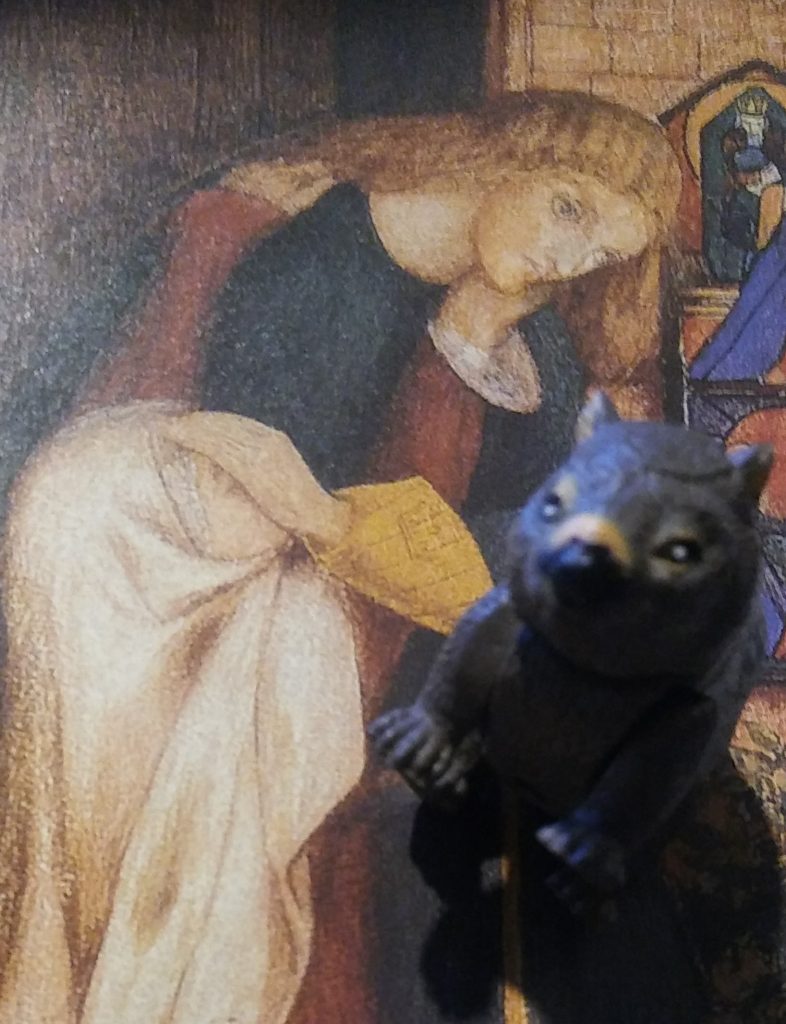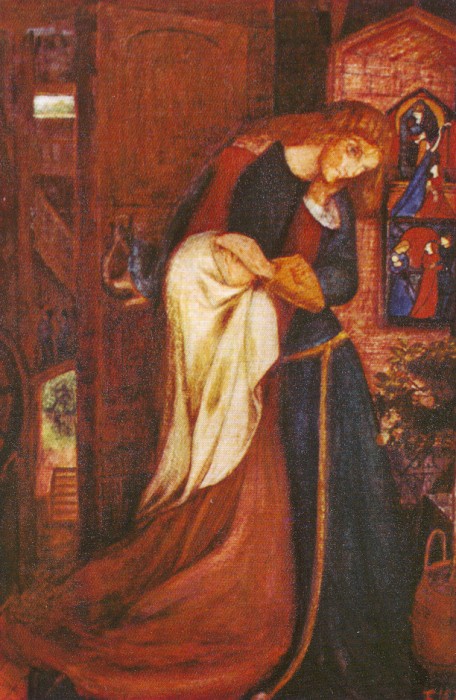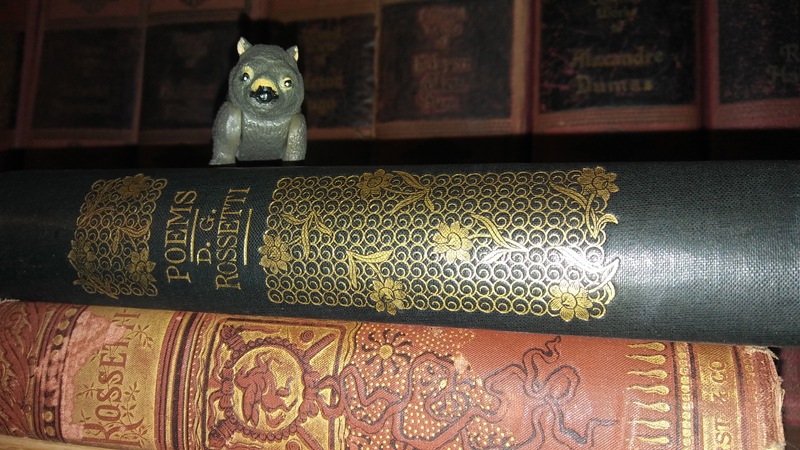Inspired by artist Dante Gabriel Rossetti’s passion for wombats, every Friday is Wombat Friday at Pre-Raphaelite Sisterhood. “The Wombat is a Joy, a Triumph, a Delight, a Madness!” – Dante Gabriel Rossetti
Once again it is #WombatFriday and this week, Thaddeus Diogenes Fern Wombat has been a worthy Pre-Raphaelite Sisterhood assistant. He does have a tendency to get distracted, though. Case in point:

Since the anniversary of Elizabeth Siddal’s birth was this week, I’ve taken the opportunity to talk to him about her painting Lady Clare.

He does not love me for my birth,
Nor for my lands so broad and fair;
He loves me for my own true worth,
And that is well,” said Lady Clare.
Published in 1842, Lady Clare is a romantic ballad by Alfred, Lord Tennyson. Exploring issues of class, marriage and honesty, Lady Clare is the story of Lady Clare and her betrothed, Lord Roland. When Lady Clare’s nurse confides in her that she is the girl’s true mother, Clare realizes that her life has been a lie and she has no rightful claim on her title or fortune. More important than that, she is no longer of the same class as Roland. Knowing that she risks losing her love, Clare tells her natural mother that she intends to do the honorable thing and tell Lord Roland the truth. Alice, the nurse, begs Clare to keep the truth a secret:
‘I’m a beggar born,’ she said,
‘I will speak out, for I dare not lie.
Pull off, pull off the brooch of gold
And fling the diamond necklace by.’‘Nay now, my child,’ said Alice the nurse,
‘But keep the secret all ye can.’
She said, ‘Not so; but I will know
If there be any faith in man.”
Clare is steadfast and does what she believes to be right. Loving Roland and knowing that she might lose him, she is compelled to tell him the truth. She changes into the gown of a peasant and goes to Roland, accompanied by the white doe he has given her as a gift. Proving that their love is true, Roland still longs to marry her even after he knows the truth of her birth.
Elizabeth Siddal painted Lady Clare in 1857. Using rich, jeweled tones, Siddal shows the nurse/mother clinging to Lady Clare as she begs her to keep her secret. Clare looks away, stoic. Her hand covers Alice’s face as she remains moral and resolute. She must tell the truth. Elizabeth Siddal had her own distinctive style and her work here has a medieval flavor. Interestingly, the stained glass window in the background appears to illustrate the King Solomon story of the two women involved in a dispute over a baby.

T-Dub says he is pretty smitten with Elizabeth Siddal and her work. I knew he would be. He is a wombat of great taste and discernment. Later today I plan to show him my post on Siddal and Bram Stoker’s Dracula, because that was a pretty fun rabbit-hole for me to explore.

